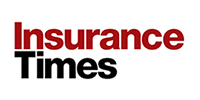‘Your price should be the right price for that customer, risk and exposure – not a reaction to market conditions,’ says managing director
Insurers have been warned that it may be difficult to maintain underwriting profits in certain product lines this year due to ongoing market headwinds.

The warning came during Insurance Times’ Top 50 Insurers: How to achieve underwriting excellence webinar in partnership with Insurance DataLab, with insurers also being urged to maintain consistency, discipline and agility.
The discussion, hosted by Insurance Times editor Katie Scott, coincided with the release of the Top 50 Insurers Report 2025 and the latest Insurance DataLab underwriting ratings, providing fresh insight into insurer performance across the UK and Gibraltar.
Scott said the session was focused on “the insurer landscape and the definition of underwriting excellence”, with the latest report revealing how the strongest performers were those maintaining a balance between growth, profitability and service.
Dan King, co-founder at Insurance DataLab, explained that the market had shown resilience after a volatile few years.
“Insurers across the UK and Gibraltar have been strengthening their solvency coverage and maintaining cautious levels of reinsurance,” he said. “They’ve returned to underwriting profit after a few challenging years.”
However, King warned that profitability could be challenging to sustain, with him adding: “With premiums levelling off and continuing pricing pressures from claims inflation, it will be difficult for insurers to maintain underwriting profits in certain product lines this year,” he added.
Headwinds in full force
Catherine Masters, director of pricing and data at Covéa, said underwriting teams continued to navigate an “elevated” and complex environment.
Read: Top 50 Insurers – Does size really matter for underwriting profitability?
Read: Top 50 Insurers – HCC International tops 2025 Underwriting Gold Awards
Explore more insurer related content here, or discover more news analysis here
“We’re still dealing with elevated claims inflation, significant economic headwinds and the regulatory landscape that we all exist in,” she explained.
Lee Mooney, UK managing director at Markel, followed on from this point, saying, “Insurers must have a strong focus on service. Across both composite and specialist markets, service has been a challenge for the past five to 10 years.”
However, Mooney added that competition had brought new energy to the market.
“Competition from MGAs has been fantastic for the market. It makes it a thriving environment where we can all put our best foot forward,” he said.
He emphasised that consistency and pricing discipline would be critical to maintaining credibility. “Your price should be the right price for that customer, risk and exposure – not a reaction to market conditions,” Mooney said.
“If your business chases scale for the sake of it, you’re destined to fail. Consistency comes from sticking to your values.”
Looking ahead, Mooney remained optimistic about the market’s ability to adapt. “Where I see challenges, I see opportunities,” he said. “If markets can remain consistent and stable while investing in talent, they can turn each challenge into an opportunity.”
Masters concluded that underwriting excellence would increasingly depend on how quickly firms can respond to uncertainty.
“Underwriting excellence is about agility to navigate a market where uncertainty is the new normal,” she said.

Hosted by comedian and actor Tom Allen, 34 Gold, 23 Silver and 22 Bronze awards were handed out across an amazing 34 categories recognising brilliance and innovation right across the breadth of UK general insurance.























































No comments yet